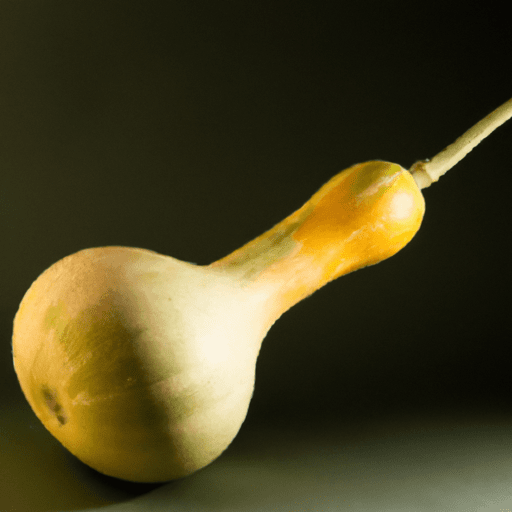All About Calabash: A Versatile Vegetable for Your Kitchen
If you’re constantly on the lookout for unique and versatile vegetables to elevate your culinary adventures, then look no further than the fascinating calabash. Also known as bottle gourd, white-flowered gourd, or long melon, calabash is a vegetable that offers a delightful combination of taste, nutrition, and culinary potential. In this blog post, we’ll take a deep dive into the world of calabash, exploring its taste profile, common uses in cooking, nutritional value, and uncovering some interesting historical facts along the way.
Unveiling the Taste of Calabash
Calabash boasts a mild and subtle flavor that leans towards the slightly sweet side, making it an excellent canvas for absorbing the flavors of various spices and ingredients. Think of it as a culinary chameleon, ready to adapt to any dish you desire. Its tender flesh has a delicate texture, allowing it to absorb the essence of the spices and seasonings it is cooked with.
Culinary Uses of Calabash
The versatility of calabash truly shines in the kitchen, where it can be utilized in a multitude of ways. Here are some popular cooking methods and dishes where calabash takes center stage:
Curries and stews: Calabash lends itself perfectly to curries and stews due to its ability to absorb flavors. It adds a pleasing texture and a subtle sweetness to these hearty, flavorful dishes.
Stir-fries: Sliced or cubed calabash is an excellent addition to stir-fries, bringing a hint of sweetness and a satisfying bite to the mix of vegetables and proteins.
Soups and broths: Calabash can be simmered in soups and broths, enriching the base with its mild flavor and providing a delightful contrast in texture.
Pickle and chutneys: When grated or thinly sliced, calabash can be pickled or transformed into chutneys, adding a tangy and slightly sweet element to your condiment collection.
Nutritional Value of Calabash
As with other vegetables, calabash offers a range of nutritional benefits, making it a great addition to a balanced diet. Here’s a sneak peek into the nutritional value of this versatile vegetable:
Hydration: Calabash has a high water content, making it a hydrating choice, particularly during hot summer months.
Vitamins and Minerals: It is a good source of essential vitamins such as vitamin C, vitamin A, and folate. It also contains minerals like calcium and potassium which are vital for maintaining overall health.
Low in Calories and Fat: Calabash is low in calories and contains minimal fat, making it an ideal choice for those watching their weight or looking for a light yet nutritious meal option.
Historical and Fun Facts
Beyond its culinary merits, calabash also has a fascinating history and a few fun facts worth exploring:
Cultural Significance: Calabash holds cultural and symbolic significance in various traditions around the world. It has been used as a musical instrument, a water container, and even in crafting decorative items.
Global Prevalence: Calabash is widely cultivated and consumed in many cuisines worldwide, including Indian, Chinese, African, and Central American cuisines. Its global appeal speaks volumes about its versatility and popularity.
Edible and Inedible Varieties: While calabash typically refers to the edible variety, it’s worth noting that there are inedible varieties used primarily for crafting purposes, such as making musical instruments, bowls, and decorative objects.
Now armed with knowledge about calabash, its taste, culinary uses, nutritional value, and history, it’s time to unleash your creativity in the kitchen. Whether you choose to explore traditional recipes or experiment with exciting new flavor combinations, calabash is sure to add a delicious twist to your culinary endeavors. So go ahead, embrace this extraordinary vegetable and let it elevate your cooking to new heights!
Sure! Here are some interesting facts about calabash:
Origin: Calabash, also known as bottle gourd or opo squash, belongs to the Cucurbitaceae family. It is believed to have originated in Africa and has been cultivated for thousands of years.
Common Uses: Calabash is a versatile ingredient that is used in culinary traditions across the world. It is commonly used in Asian cuisine, particularly in Chinese and Indian dishes. In Chinese cooking, calabash is often stir-fried or added to soups. In Indian cuisine, it is used in curries, dals, and even desserts. Calabash can be sliced, diced, or grated for various preparations.
Nutritional Benefits: Calabash is low in calories and is a good source of vitamins A, C, and E. It is also rich in dietary fiber, which can aid digestion. Additionally, calabash contains minerals such as calcium, potassium, and magnesium.
Unique Properties: One unique property of calabash is its thick, hard shell that can be dried and used as a bottle or container. In many cultures, calabash gourds have been used to make musical instruments, such as maracas and traditional drums.
Historical Significance: Calabash has a long history of use in various cultures. In some African cultures, calabash has both practical and cultural significance, being used as food containers, water vessels, and even musical instruments. It is also believed to have medicinal properties and has been used in traditional medicine for ailments like constipation and urinary disorders.
These facts provide an overview of calabash, including its origin, common uses, nutritional benefits, unique properties, and historical significance.




Use the share button below if you liked it.
It makes me smile, when I see it.